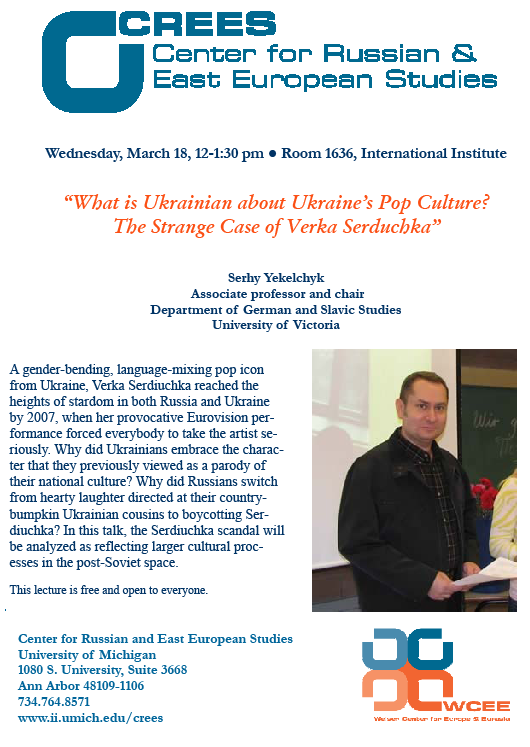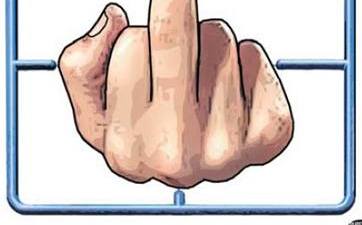 I have been traveling and working on other projects and so have not had time to post a coherent post-election review, and I may not have time to do that until tomorrow, so in the meantime I will attach here a record of interview I did with the ever-capable Michaela Stankova of the Slovak Spectator. Sitting here in Detroit writing about Slovakia, I think that I am more properly called a spectator than she, but here are my answers to her excellent questions:
I have been traveling and working on other projects and so have not had time to post a coherent post-election review, and I may not have time to do that until tomorrow, so in the meantime I will attach here a record of interview I did with the ever-capable Michaela Stankova of the Slovak Spectator. Sitting here in Detroit writing about Slovakia, I think that I am more properly called a spectator than she, but here are my answers to her excellent questions:
What were the most surprising moments for you in the election results? Was there anything completely unexpected?
I did not expect how inaccurate the final week of polling numbers, and I was especially surprised by the difference between the exit polls and the final results: 6-7% difference between polls and reality for Smer is quite shocking. Even exit polls are usually are not particularly good at predicting final results, but for both FOCUS and MVK to be so far off and in the same direction suggests a need to rethink polling and especially exit-polling methods, something that has occurred in a variety of countries including my own. Fortunately, this particular surprising had little consequence except for those prone to extremes of euphoria or melancholy and by 02:00 we could more or less predict the actual composition of the next coalition. As for the results themselves, I the only real surprise was in the relative percentages obtained by Most-Hid and MKP-SMK, but since I figured that I had no way of knowing how those would come out, there is no result that would not have surprised me in one way or another.
Beyond the election results themselves, the final days of the campaign produced some remarkable moments: HZDS giving out flour as an election enticement; Fico so concerned about a minor competitor as to brandish a “Don’t vote SDL” sticker; the moment of 00:42 on election night when the updated election returns put HZDS below 5.0 for the first time ever in its history; and my sudden realization around 02:00 that Slovakia would have its first female prime minister, news which my 6-year old daughter greeted with great enthusiasm.
The election turnout was expected to be very low, about 50 percent, yet the actual number hits 59 percent. What’s the reason for this unexpected interest of voters in the elections, in your opinion?
Well the problem is in the expectations rather than the interest. In my research for our last interview, I found that voting intentions were not running behind 2006 and that in other elections there had been a slight uptick in turnout from the mid-2000s to the late-2000s and so there was few grounds for expecting a sharp decline. I think that a small share of turnout increase may be related to the emergence of several new parties which perhaps offered some motivation for turning out: SaS, Most-Hid and SDL between them attracted more than 20% of the vote; it is not to big a stretch to think that without plausible new parties (a condition that prevailed in 2006) some of these voters might have stayed home.
The election results of HZDS has encouraged political analysts and opposition politicians to talk about the ‘end of the Meciar era’. What does the fact that they were left outside the parliament mean for the party’s future?
The day after the 2006 election I plotted out trendlines for the various parties’ parliamentary delegations and found that the trendline for HZDS pointed precisely at 0 in 2010. I turned this into provocative graph for my blog, but Inever ever expected it to be accurate. Until about two months ago I figured the party would have enough reserve strength to scrape over the barrier.
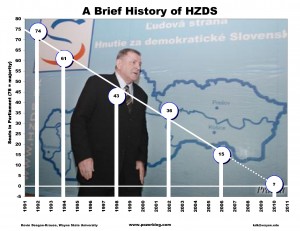
Now that HZDS is out of parliament, it will be even harder to reverse that trend (though I don’t expect it to achieve -15 seats predicted by the trendline for 2014). Three forces work strongly against HZDS in the coming four years: history, demographics, organization.
- History is not a causal factor but something to take a close look at to determine causes. With parties almost never return to parliament after dropping below the 5% threshold. Once out of parliament, parties tend to be forgotten and sink even further or disappear altogether as the examples of ZRS, SOP, ANO, and KSS indicate. In Slovakia the only major exception I can think of is SNS, which re-formed after its split in 2000 and manged to recover its initial electorate. In the neighboring Czech Republic the Party of Greens also managed to re-enter parliament after a long hiatus but only as a completely reorganized organization with a new leadership. HZDS lacks similar quick fixes to problems with its electorate and demographics.
- Demographics plays a major role in the sense that HZDS already had the oldest electorate in Slovakia’s politics and it was aging at about 1 year per year. Even if all of its voters stayed loyal–something that obviously did not happen between 2006 and the present–it would still have fewer voters than it does now (and despite the picture of Meciar with a laptop, a party that distributes flour on election-day does not show strong signs of being able to reach out to younger voters). HZDS also has the oldest leader of any of Slovakia’s major parties. Meciar will be 72 in 2014 and he is already not the active campaigner and public presence that he once was.
- HZDS organization will also work against the party’s recovery. A party with 4.4% might be able to recover to 5%–and both the Party of the Hungarian Coalition in Slovakia and the Christian Democrats in the Czech Republic will be trying to demonstrate their resilience–but not with the same leadership–something that the leadership of MKP-SMK and KDU-CSL recognized in their immediate resignations. The problem for HZDS is that Meciar has systematically created a party that cannot live without him. Since every HZDS leadership challenge has ended up with the departure or expulsion of the challenger there is really nobody left in the party. HZDS and Meciar are inseparable and for that very reason both appear to be without a political future. As an afterthought, I suppose it is theoretically possible to envision HZDS surviving in some weak form as part of an electoral coalition whose members might share 7%, but right now it is not clear what party would willing to join with it in that effort, and if, as I suspect, HZDS’s poll numbers begin to fall consistently below 3% it would not become a particularly appealing partner.
What is behind the very high result of Smer? Why, on the other hand, did the support for SNS drop?
Let me discuss these in reverse order. For SNS the results were actually highly consistent with the polls (with the occasional exception of FOCUS and the constant exception of the consistently-errant surveys by Median) which showed a long-term drop toward 5%, motivated I suspect (though I can’t at the moment prove) by the party’s ever-lengthening list of scandal and outrageous remarks. The question on many minds, I’m sure, is “Why didn’t the affairs surrounding the new Hungarian government” cause its preferences to increase. I cannot be sure without looking into post-election polling numbers, but the answer may be that these simply did not resonate with voters in the way that they resonated in the media. Corruption appears to be more tangible and distasteful than statements from Budapest which do not have any clear personal impact for most voters. The other question is “where did the SNS voters go?” Here the evidence suggests that as many as 1% of them went to Nase Slovensko, with its even more radical solutions, and that nearly all of the rest either left the electorate or went to Smer. Voter choice is always relative, and for a voter with a national orientation who nevertheless dislikes Slota or the corruption of his party, Smer is the next best national alternative and less touched by scandal. This, however, raises the further question of “where did the Smer voters go?”
From one perspective, Smer’s results are “high” only by the standards of the final week of polls, which we now know to be (for reasons unknown) in sharp error. Leaving aside the final week drop (and the polls of the final week proved in both 2006 and 2010 to make worse predictions than those from a month before) Smer lost more than 10 percentage points from its peaks during 2008. A variety of experts including Martin Slosiarik at Smer argued at the time that many of these were “soft” supporters who chose Smer as the default option which was in government during a period of economic growth. The work of Andrew Roberts and others shows that incumbent parties in Central Europe do tend to lose support during periods of economic decline, and many of those softer supporters appear have been affected by increasing unemployment and scandals involving those close to Smer. Where did they go? Some simply did not vote, others voted for SDL or KSS (though together not many more than voted for KSS in 2006) and a significant number of the remainder appear (at least in pre-election surveys) to have opted for SaS. From a purely left-right ideological standpoint this shift seems unlikely, but if voter choice is relative and often non-ideological, then those who simply seek economic opportunity (without having a firm idea of how it should be brought about) and/or seek a cleaner alternative (the role that Smer itself played in 2002 and 2006) then SaS may be a reasonable choice. (More on this using pre-election data here: http://www.pozorblog.com/2010/06/who-from-whom-slovakia-electoral-shift-roundup/).
Having said all that, I need to point out that Smer not only got the most votes in the election by more than a 2:1 margin but also that it increased its vote share by a sold 5 percentage points over the previous election (and its number of votes by an even greater margin) despite the fact that new parties in government usually lose significant support or collapse completely. From an electoral perspective, Smer clearly did many things right: it stayed away from the worst of the corruption scandals (perhaps by putting the “ministries of corruption” in the hands of its coalition partners), it took a relatively popular national position without taking it to extremes (though it started to move in that direction in the last year), and it continued to criticize the wealthy and promote redistributive policies (even if many of those were more symbolic than economic). My question is what happens to Smer now. It has always been a party that seeks opponents and it will find this easier to do from opposition, but it will face at least three big challenges:
- First, it managed its increased result with a significant inflow of voters from SNS and HZDS and with rhetoric designed to attract those voters. It would not surprise me if the Smer electorate has not now moved significantly told the older and rural side of Slovakia’s demographic spectrum, ending up where HZDS did in about 1994 or 1996. This will shape the party’s appeals, as will the weakness of SNS, and it would not surprise me to see Smer move even more fully into the ideological space formerly occupied by HZDS in the late 1990’s of “the (not-as-radical-as-Slota) defender of Slovakia’s national sovereignty.”
- Second, Smer will be going from government to opposition with a very large parliamentary deputation. It has been in opposition before and stayed very disciplined, but not with such a large group. It has had a large delegation before but not without the carrots (and sticks) of parliamentary and government offices. It will be interesting to see whether Smer can avoid splintering if some deputies, perhaps with savvy media advice and outside financial support, see an opportunity for doing better on their own, particularly if the Smer itself inclines more toward the national appeals.
- Third, Smer’s own leader may be torn about what to do in 2014. Since 2008 I have heard persistent rumors that Fico would rather be president than prime minister. Because I work from the presumption that leaders would rather have more power than less, I have always discounted these rumors as either wishful thinking (by Fico’s opponents) or misdirection (by Fico’s supporters) but they have come up so often from so many sides that I sometimes have to wonder. If it is true that Fico would rather be president than prime minister, he will have his best chance to do so in 2014. Indeed it is hard to imagine a candidate who could come close to beating him in a one-on-one race, and he will have the advantage of running from opposition without the burden of responsibility for government policies. My suspicion still is that with those advantages any politician I know would still rather be prime minister than president, but if Fico does opt for the presidency (or even lets his mind wander in that direction), then Smer will need to deal with the tensions among a rather large and diverse group of second-tier politicians–Kalinak, Madaric, Caplovic, Paska, Pociatek, Benova and a few others–who may be looking to step into Fico’s shoes and who may not like it much when one of the others takes the spot.
How do you evaluate the results of the two parties representing the Hungarian minority? Were the results surprising for you?
This one has always been opaque to me, in part because I cannot not read the Hungarian press and because what I read in the Slovak press does not even allow me to pretend to know what is going on in the Hungarian community, and there were no precedents that would have allowed me to build a rough model based on past election data. In principle I found it highly unlikely that the Hungarian parties would maintain the 55:45 split they needed to both stay viable, but the polls pointed consistently at their near equality. If we discount OKS, whose preference votes accounted for almost 10% of all Most-Hid’s preference votes, the actual ratio of Most-Hid to MKP-SMK among Hungarians was probably about 7.2 to 4.4, so the final ratio was just a bit above 60:40. It may be that Bugar’s geniality and moderation were more of an electoral motivator than Csaky’s better organizaiton, but for a better understanding of why 20% more Hungarians favored Bugar’s new party than Csaky’s more established one, I look forward to a thorough and demographically-grounded analysis from Hungarian-speaking experts.
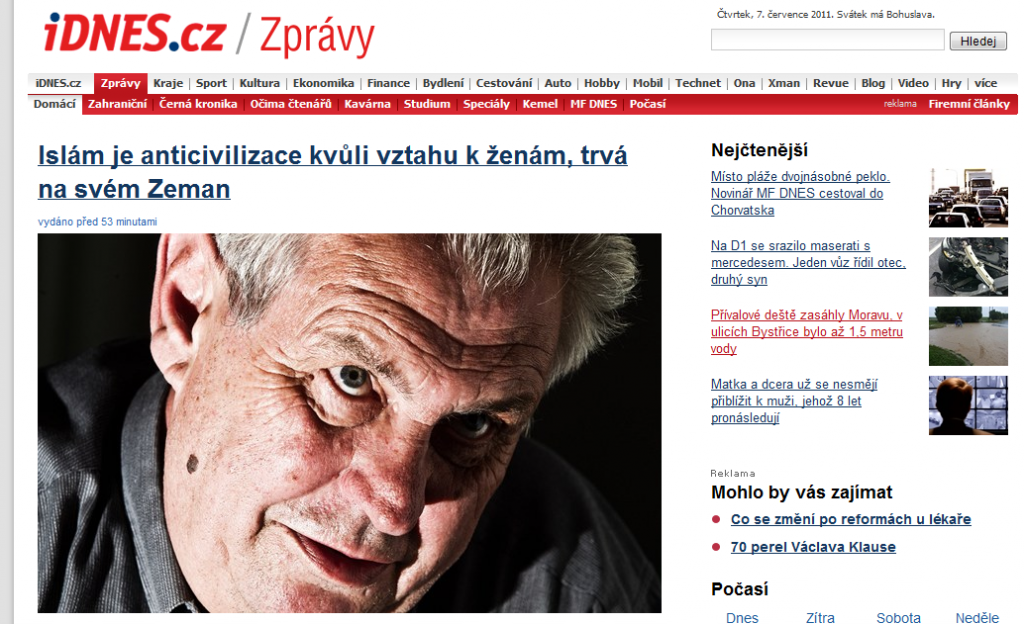



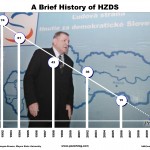
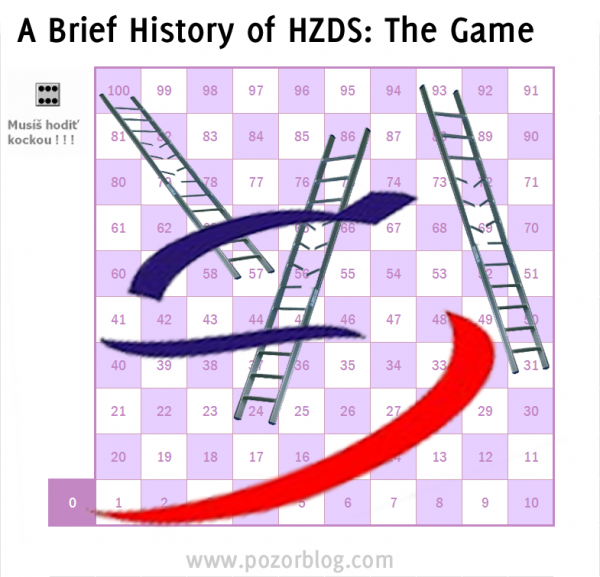

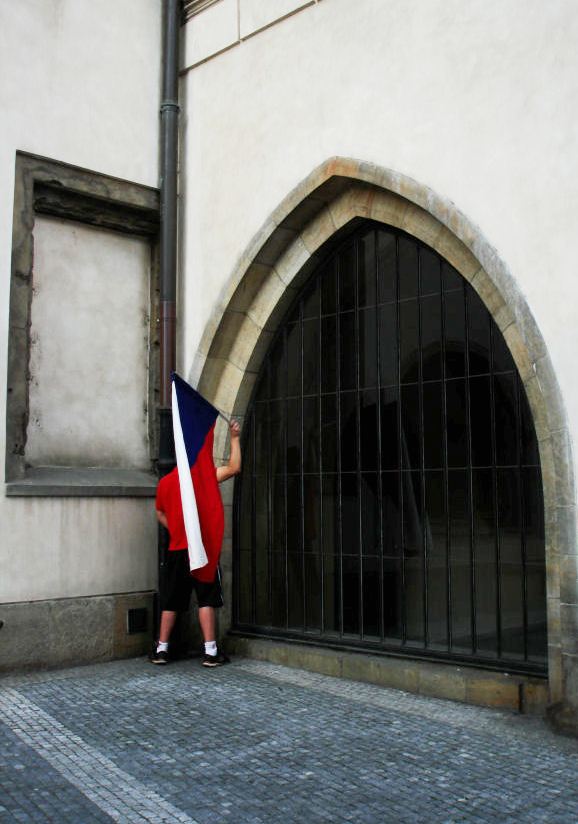
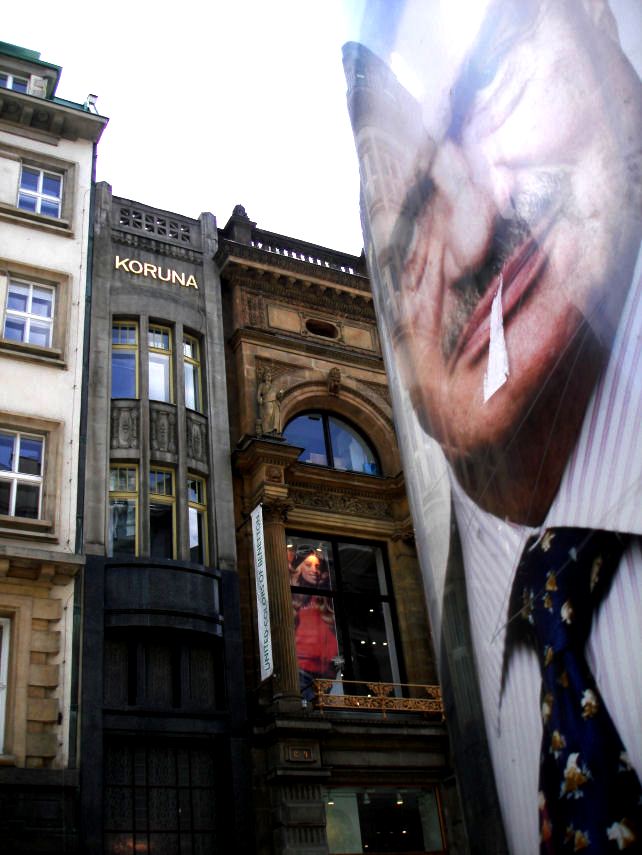
 To even a first time reader of this blog, it is clear that I am addicted to the politics of Central Europe, but some long-time readers might also know that I also have a minor (but still unhealthy fascination) with the Eurovision song contest– coming up in less than two weeks, by the way. These two things came together for me in a new way when I read SME‘s nice nice piece on Slovakia’s campaign songs from seasons past (
To even a first time reader of this blog, it is clear that I am addicted to the politics of Central Europe, but some long-time readers might also know that I also have a minor (but still unhealthy fascination) with the Eurovision song contest– coming up in less than two weeks, by the way. These two things came together for me in a new way when I read SME‘s nice nice piece on Slovakia’s campaign songs from seasons past (
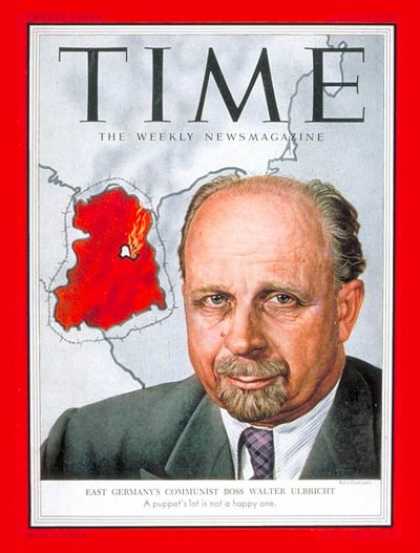

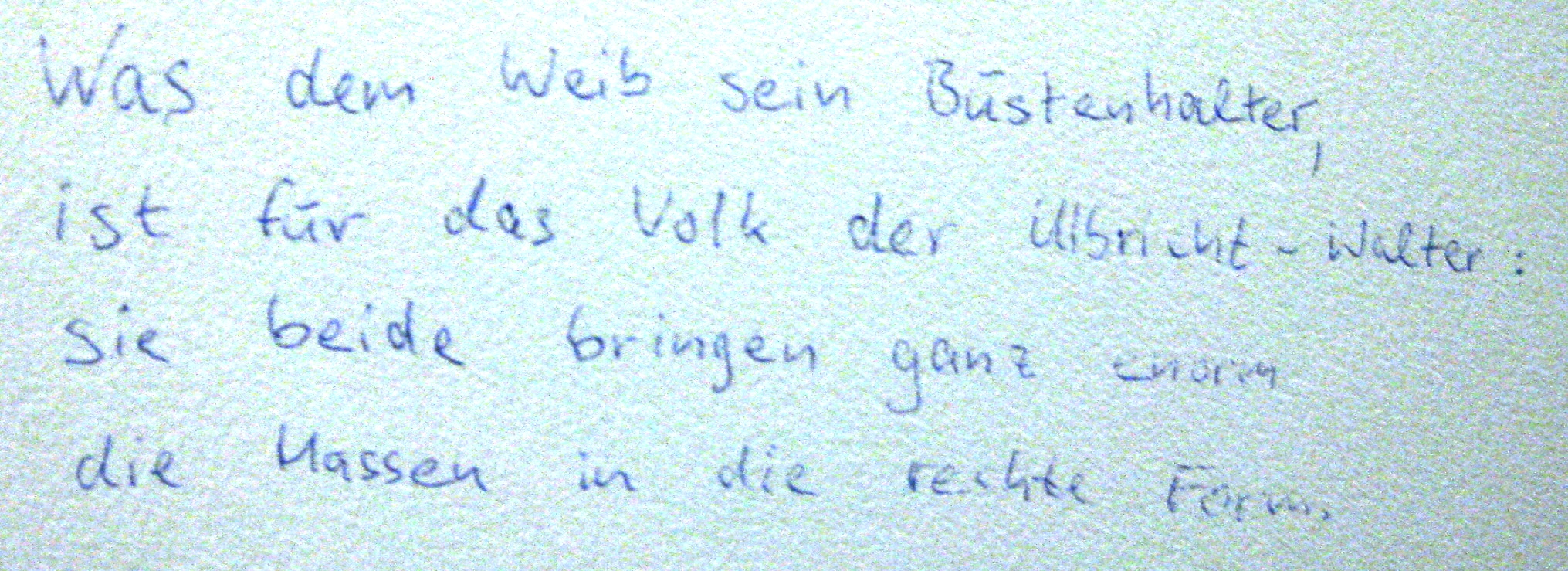
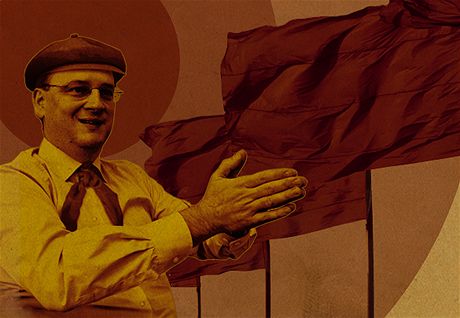
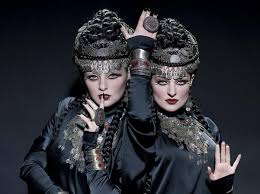 Douglas Muir at
Douglas Muir at 



